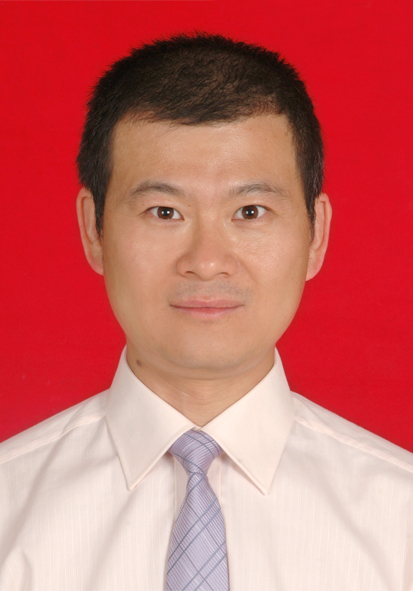
|
Hongxian Han, Prof./PhD. Office Room #708,
Division of Solar Energy,
Dalian National Laboratory for Clean Energy,
457 Zhongshan Road,
Dalian, 116023, China
Email: hxhan@dicp.ac.cn
Phone: 0411-84379760 |
|
|
|
Prof. Hongxian Han is group leader of DNL1602. Currently, he is a research Scientist in the State Key Laboratory of Catalysis, Dalian Institute of Chemical Physics, Chinese Academy of Sciences, and Division of Solar Energy Research, Dalian National Laboratory for Clean Energy. He received the Hundred-Talent-Program of the Chinese Academy of Sciences in 2009 and priority support in 2011. After PhD study in the University of New South Wales, Sydney, Australia, he went to USA and worked as postdoctoral research fellow/project research scientist in the University of Nebraska-Lincoln(postdoctoral fellow), and Lawrence Berkeley National Laboratory (postdoctoral fellow/project research scientist) . His main research experience lies in: fullerene, charge transfer complexes of TTFs and derivatives, photoinduced charge transfer in heterogeneous media and long lived charge separated state, high spin organic polyradicals for magnets, photocatalytic splitting of water and photocatalytic reduction of CO2.
Currently, Prof. Hongxian Han focuses his research field on solar energy to chemical energy conversion, including four reactions: hydrogen production via photocatalytic reforming of biomass, and hydrogen production via photocataltyic degradation of industrial wastes. hydrogen production via photocatalytic splitting of water, photocatalytic reduction of CO2
Education and Employment History
2009–present: Leader of DNL1602, State Key Laboratory of Catalysis, DICP; research scientist in the Division of Solar Energy Research, DNL.
2003-2009: Research scientist/postdoctoral fellow: Lawrence Berkeley National Laboratory, University of California, Berkeley, CA, USA.
2003: Postdoctoral Research Associate: University of Nebraska, Lincoln, Nebraska, USA.
1999-2003: PhD, the University of New South Wales (UNSW), Sydney, Australia.
Current Research Projects
1) Solar Energy Conversion to Produce Hydrogen based on Nano-semiconductor photocatalysts (2009CB220000), one of the 10 projects of the MOST 973 Program, Principal Investigator (Representative of Prof. Can Li).
2) Visible Light Photocatalysts for Biomass Reforming to Produce Hydrogen and Value Added Chemicals (KGCX2-YW-391), Primary Research Project of CAS, Principal Investigator (Representative of Prof. Can Li).
3) Assembly of Visible Light Absorbing Photocatalytic System for Water Splitting (R200904), Project of State Key Laboratory of Catalysis, Principal Investigator.
4) Photocatalytic Splitting of Water into Hydrogen and Oxygen (21090341), one of the 3 projects of the NSFC Primary Research Program, Principal Participant.
5) The Role of Cocatalyst and Junctions in the Assembly of Water Splitting Photocatalytic System, NSFC A3 (China, Japan, and Korea) Foresight International Cooperation/Collaboration Program, Principal Participant.
Representative Research Outcomes
1) ZnO and ZnGeON can form a kind of solid solution phase junctions, which is assemble to the electron transfer chain in natural photosynthesis. Formation of such kind of solid solution phase junction can facilitate the charge transfer and separation, enhancing the photocatalytic activity (J. Phys. Chem. C, (2010), 114, 12818-12822).
2) Development of a new methodology for the assembly of visible light absorbing MMCT electron pump unit on the surface of mesoporous materials, such as MCM-41 (Microporous and Mesoporous Mater, (2007), 103, 265-272,J. Phys. Chem. C, (2008), 112, 16156–16159).
3) TiOCr electron pump coupled to IrOx multi-electron transfer catalyst can oxidize water under visible light irradiation with quantum efficiency of 13 % (J. Phys. Chem. C, (2008), 112, 8391-8399).
4) Photocataltyic reduction of CO2 to CO on Ti-MCM41under UV light irradiation, and observation of O2 evolution for the first time. The mechanic study shows that the photoreduced CO formation is two photons one electron transfer process (J. Phys. Chem. B, (2004), 108(47), 18269-18273).
5) Determined the redox potential of Al-MCM41; thermodynamic study shows that the long lived radical species formed upon irradiation of D-B-A triads are either the D+• or A-• radicals through electron transfer between the redox sites of Al-MCM41and the D or A moieties of the D-B-A (Res. Chem. Intermed. , 34 (5-7), 551-564, 2008).



